‘Scary’ Pruning Practices
In honor of Halloween, I thought that I would do a ‘scary’ post for all of you.
Now, this post isn’t filled with ghouls, witches, skeletons or zombies. But that doesn’t make it any less scary.
Over the years, I have photographed examples of truly horrific pruning, which are quite scary 😉
WARNING: The following images are not for the faint of heart…
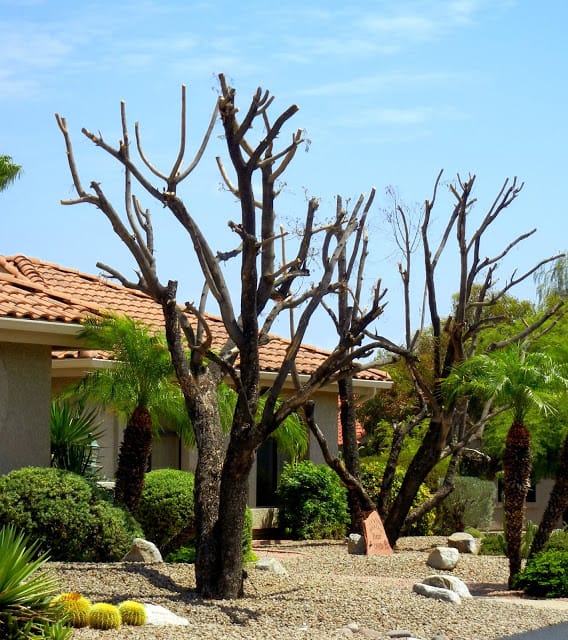
These used to be Jacaranda trees. I say “used to” because they died because of this severe and unnecessary pruning.
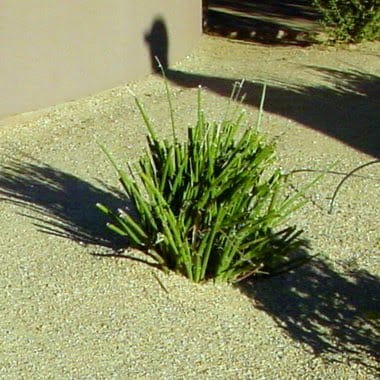
This is a photo of a Red Yucca (Hesperaloe parviflora) that was pruned the wrong way.
Unfortunately, this was a landscape that I was in charge of 14 years ago next to the clubhouse on a golf course.
My well-intentioned crew member, thought he was doing me a favor by pruning them for me. He was so proud of the work he had done, that he came into my office and asked me to come outside and see his handiwork.
I must say, that it was hard to criticize him because he was so proud of his work. Needless to say, I transferred him to doing more clean-up and less pruning around the golf course.
A few months later, he returned to his small town in Mexico where he became mayor 🙂
*This is what Red Yucca are supposed to look like when in flower…

As you can see, you don’t cut the grass-like, succulent foliage below – ever. The flowers can be pruned to the base when they die. If the base clump become to wide, then divide the base much like you would perennials.
This photo was taken of another landscape area about 12 years ago that I was in charge of by another golf course. I made sure that the crew did not prune it 😉

Last month, I was in the historic district of downtown Phoenix returning from a landscape consultation when I drove by these very sad California Fan Palms.
While fall is the time to prune back – this is NOT the way to do it. Too much was removed. For guidelines on how to prune palm trees, click here.
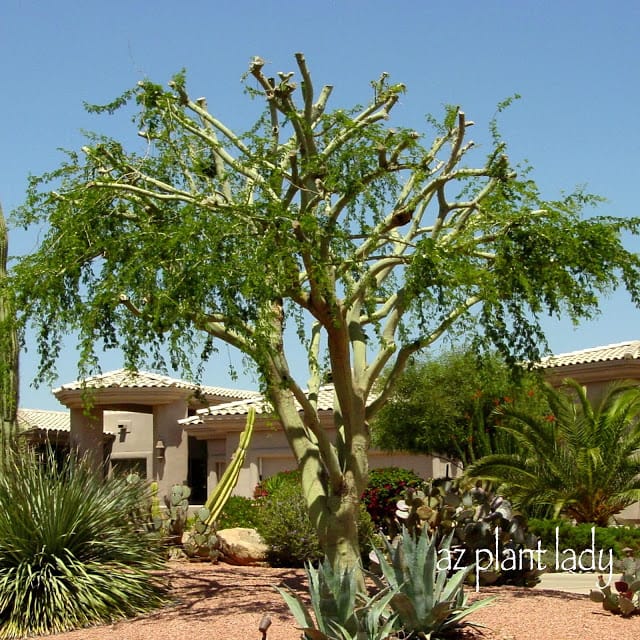
This was a beautiful Palo Brea tree. Unfortunately, it was ‘topped’ in order for the homeowner to preserve their view of the mountains.
‘Topping’ trees is very bad for trees. It leaves the upper branches open to sunburn, which is often followed by insect infestations or disease.
In fact, topping trees causes the tree to grow faster, to replace the lost foliage, which leads to an increased need for pruning. The branches that appear after ‘topping’ have a very weak attachment, which makes the new branches a hazard because they are in danger of breaking off.
**If a tree is blocking a view that is important to you – then remove the tree instead of subjecting it to torturing it with this type of pruning.
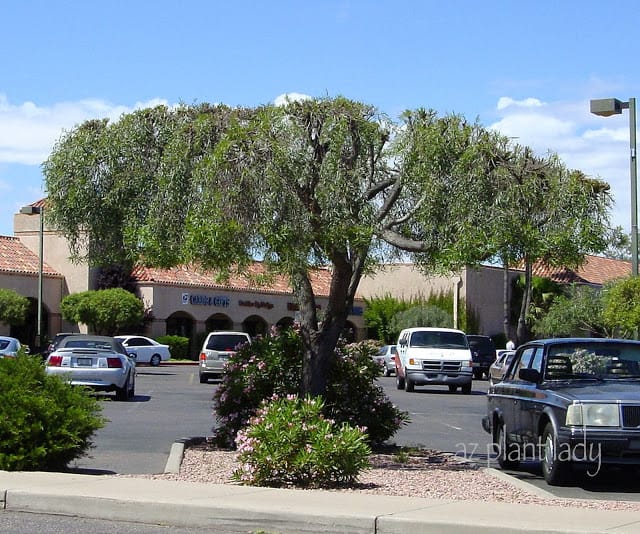
Here is another example of ‘topping’. This parking lot in Scottsdale, has trees like this.
Believe it or not, this ‘topped’ tree is a Willow Acacia (Acacia salicina).
This is what it should look like…
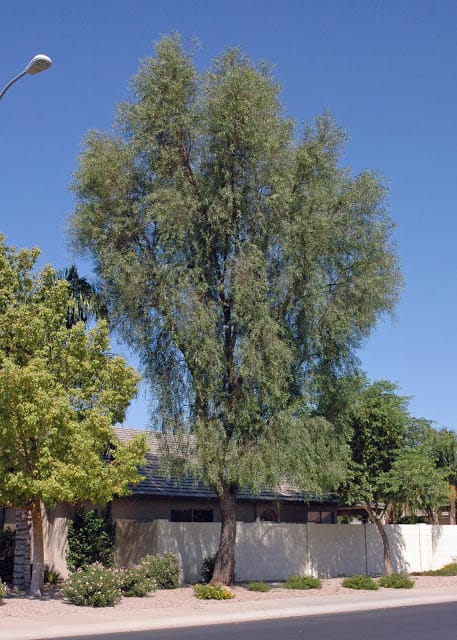
Hard to believe that they are the same type of tree, isn’t it?

I don’t think that I have ever seen an agave pruned so badly before.
The only time you need to prune an agave is to remove the bottom leaves, once they die.
I think that this agave would have looked much nicer if they had left it alone, like the one below…
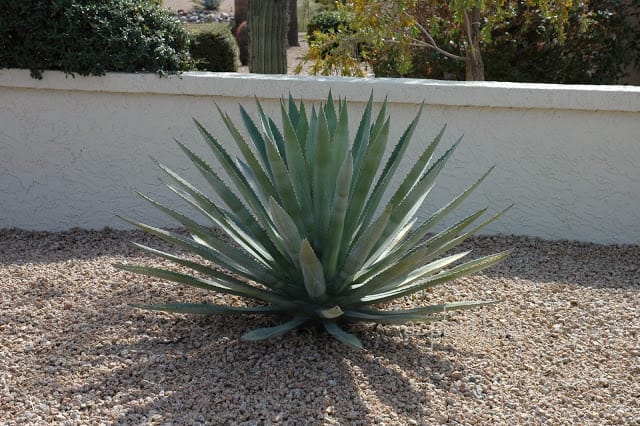
It would also be much healthier and less likely to be susceptible to insect attack.
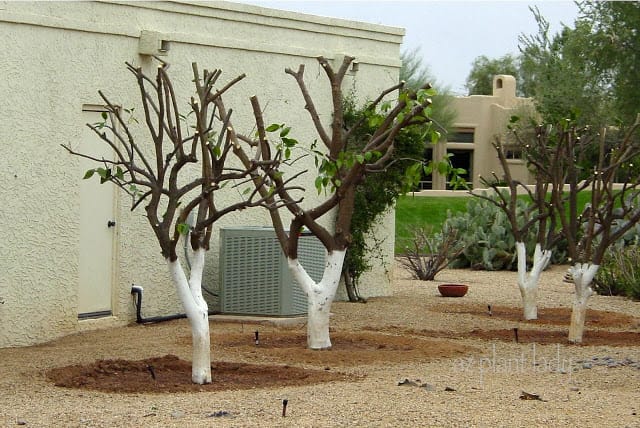
Believe it or not, these are citrus trees.
I could hardly believe my eyes when I drove by and saw what had happened to these trees.
You may be thinking that maybe they suffered from severe frost damage and had to be cut back. But, I assure you, this wasn’t the case. I worked just down the road from this house and there was no reason for these trees to be pruned this severely.
Ideally, citrus trees are pruned in March, concentrating on removing dead branches and suckers.
In fact, did you know that the lower branches produce more fruit that tastes sweeter than that on the higher branches? That is why you see citrus growers letting the lower branches of their trees grow instead of pruning them up into tree shapes.
**Just don’t let any branches (suckers) from below the bud union grow because they are from the root stock and are thorny and will produce sour fruit.
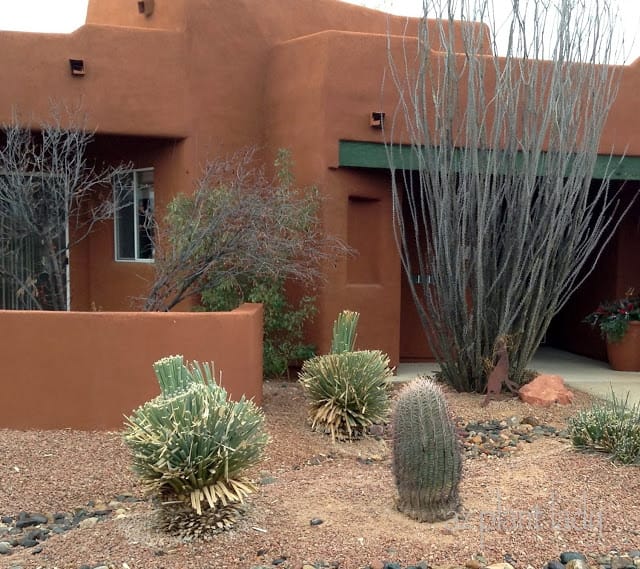
Much like the Red Yucca I showed you earlier, these Desert Spoon have been butchered.
They also did the same to their own Red Yucca, off to the right.
Desert Spoon has a beautiful, natural form.

The only pruning to be done is to remove the bottom leaves once they turn brown and die.
**************************
I hope you haven’t been to ‘scared’ by these scary pruning practices.
Sometimes it is easy to get carried away when pruning. But it is important to remember that a plant’s leaves make the food for the plant. Take away the ability of the plant to make food, it will re-route resources normally used for dealing with environmental stresses as well as defenses against insects and disease toward growing new leaves.
This will make your plants/trees more susceptible to other problems, not to mention leaving them ugly.
“Scary” Pruning Practices and the Unfortunate Results

 Noelle Johnson, aka, 'AZ Plant Lady' is a author, horticulturist, and landscape consultant who helps people learn how to create, grow, and maintain beautiful desert gardens that thrive in a hot, dry climate. She does this through her consulting services, her online class Desert Gardening 101, and her monthly membership club, Through the Garden Gate. As she likes to tell desert-dwellers, "Gardening in the desert isn't hard, but it is different."
Noelle Johnson, aka, 'AZ Plant Lady' is a author, horticulturist, and landscape consultant who helps people learn how to create, grow, and maintain beautiful desert gardens that thrive in a hot, dry climate. She does this through her consulting services, her online class Desert Gardening 101, and her monthly membership club, Through the Garden Gate. As she likes to tell desert-dwellers, "Gardening in the desert isn't hard, but it is different."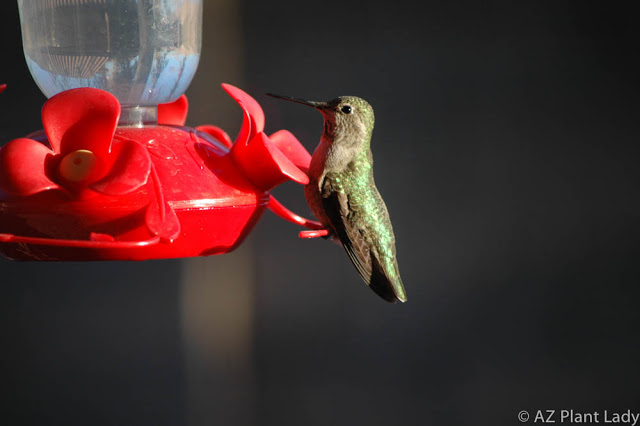

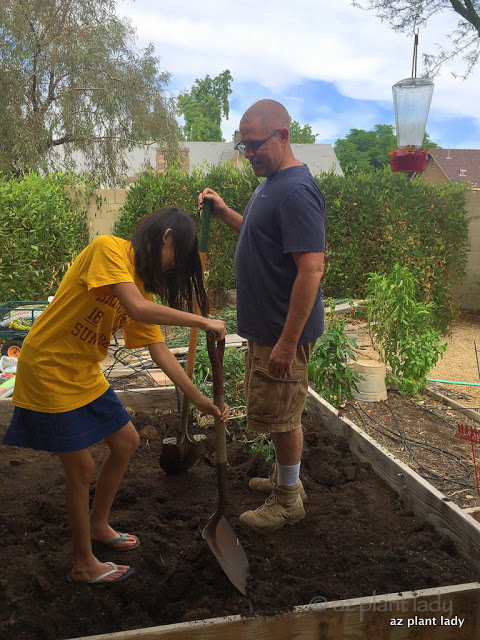
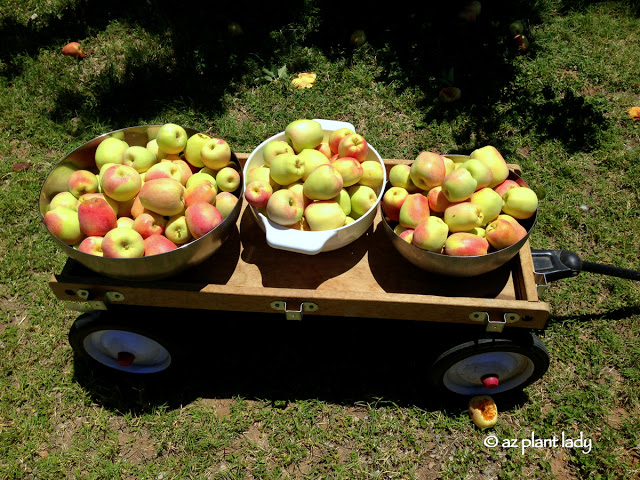
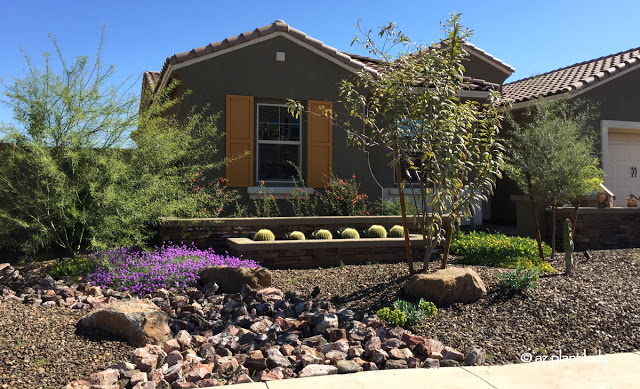











Pruning desert trees, to me, seems like one of the most complicated to figure out since they tend to grow in more of a bush shape naturally. I've seen a lot of terribly pruned mesquite and palo verde.
We're looking at buying a certain house in Tucson and the current owners have planted several lovely citrus trees. It's going to kill me, but if we end up getting it I think I may have to rip them out. They're all pruned up fairly high (even though they're young) and planted too close to the wall. What a terrible waste! But of course I would consult a professional first.
You should be able to deduct the cost of producing this post 'cause it CLEARLY is a Public Service Announcement. eep! Hope you've saved many plants from such a fate.
All these examples look like so much pruning in Sun Lakes. It just makes me so sad to see. I sure hope your blog helps Noelle.
Terrifying, funny, and tragic!
I have a question. I have a 40 year old sotol that has at least 4 different plants growing within it. I was wondering how I might be able to separate the plants? I live in Las Cruces, NM. I usually trim off the dead dry leaves and not touch the green leaves. I don’t want to harm the plant but it’s getting huge.
Thanks for your info
Brad
Hi Brad,
I don’t believe it can be divided and can understand your concern over its huge size. I often recommend replacing it and adding a new one when that happens. I hope this helps!
Oh my gosh! If you were outside, you might hear me shouting or screaming (quietly.) I’ve never seen this post, but WOW, does it convey your message! I know you often say, “Replace, when they get old…” But how can the Gardeners butcher the plants/trees? I’m stunned. OK, my own Gardeners, both in AZ & OC, have done some (a lot of) butchering. When you walk out in the yard, you stop and say what the heck? It’s shocking. I ended up having my Gardener pull the plant (it looked so ugly, OC.)
Thanks for the pictures.
S.
PS. sometimes they do it early am or quickly.